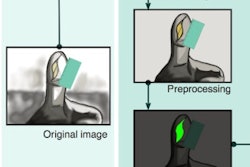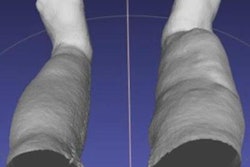The current protocol for eye socket fracture repair calls for surgeons to determine the ideal shape of orbital implants based wholly on visualization. It is very difficult to match the implant to the 3D shape and size of the fracture using this method, according to the researchers from the University of Ulsan.
"Complications occur in about 10% of orbital fracture patients treated with implants," Namkug Kim, PhD, told AuntMinnie.com. "The key to our study was to improve the accuracy of implant shaping."
At the request of ophthalmologists at the hospital, Kim and colleagues used a 3D printer to generate a 3D model of the orbital bone based on previously acquired CT scans, which allowed the surgical team to create orbital implants tailored to individual fractures.
No vision-related complications have occurred so far in any of the seven orbital wall reconstructions done using this technique.
"The causes of complications [in orbital wall reconstruction] vary, but the most common cause is inconsistency between the fracture site and the implant," Kim said. "We reduced the risk of implant departure from the fracture site by creating implants with more accurate shapes, and we expect this to decrease the number of complications as well."



















